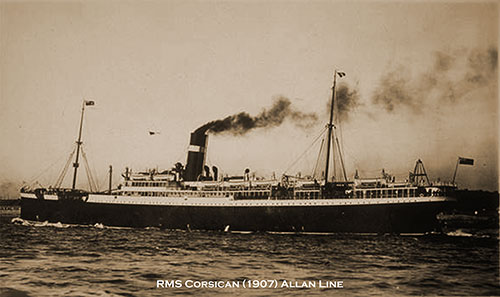US Immigration Landing Card - Canadian Port of Entry - 1907

Allan Line Landing Card from the SS Corsican, Canadian Port of Entry, for the United States Immigration Service, 1907. | GGA Image ID # 1fb5494032
ALLAN LINE
(This Card is to be [completed] and handed to Purser to each First and Second Class Passenger destined for the United States of America).
United States Immigration Service
SS Corsican
Name of Passenger: Clara Gale
Manifest A Number 20
Present this Card to the U.S. Immigration Officials before landing in Quebec.
Modern-Day Landing Cards
Passports were not required in 1907, and the steamship lines would provide passengers with Landing Cards that stated basic information such as the ship they arrived on, their name, and reference (page and Line number) where additional information can be located on the passenger manifest.
Today, an arrival card, also known as an incoming passenger card, landing card, or disembarkation card, is a legal document used by immigration authorities of many countries to obtain Information about incoming passengers not provided by the passenger's passport (such as health, criminal record, where they will be staying, purpose of the visit, etc.) and to provide a record of a person's entry into the country.
The card may also provide information on health and character requirements for non-citizens entering the country. Some countries require an arrival card for each incoming passenger. In contrast, others require one card per family unit, and some require an arrival card for non-citizens only.
The Information provided now is considerably more extensive and reflects the much more restrictive immigration laws today.

RMS Corsican (1907) of the Allan Line. | GGA Image ID # 2063c6a02e
